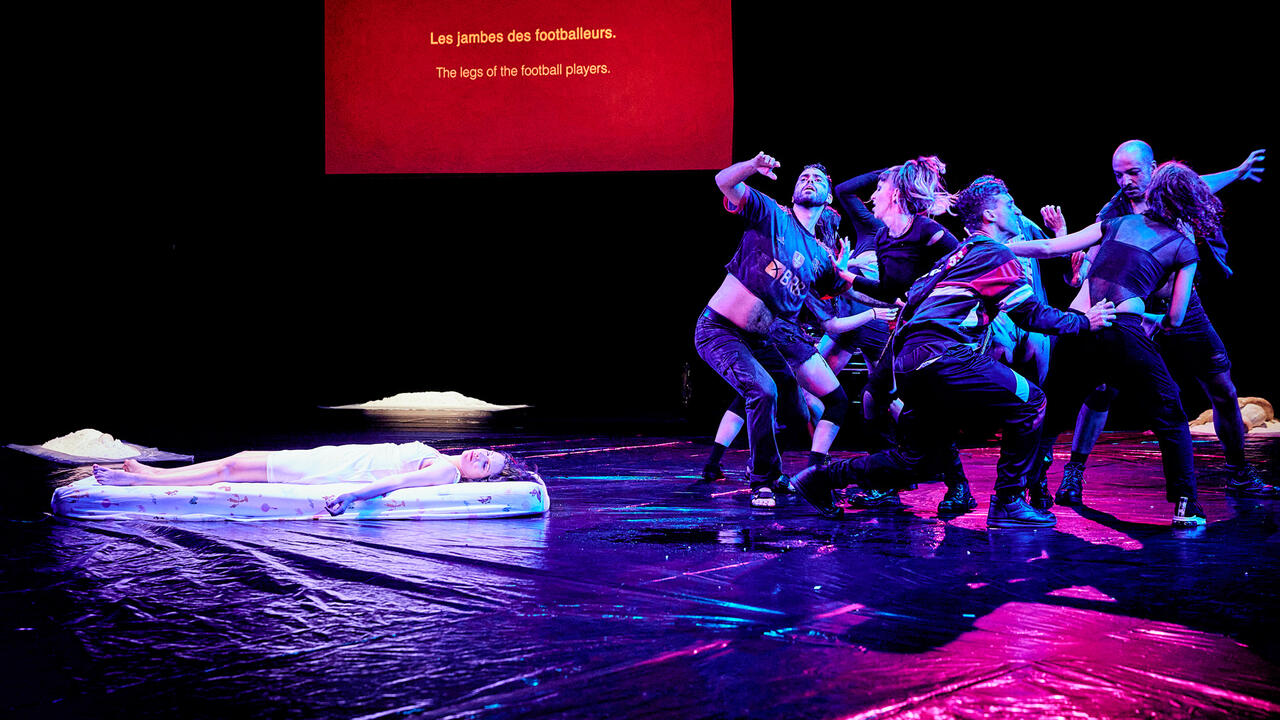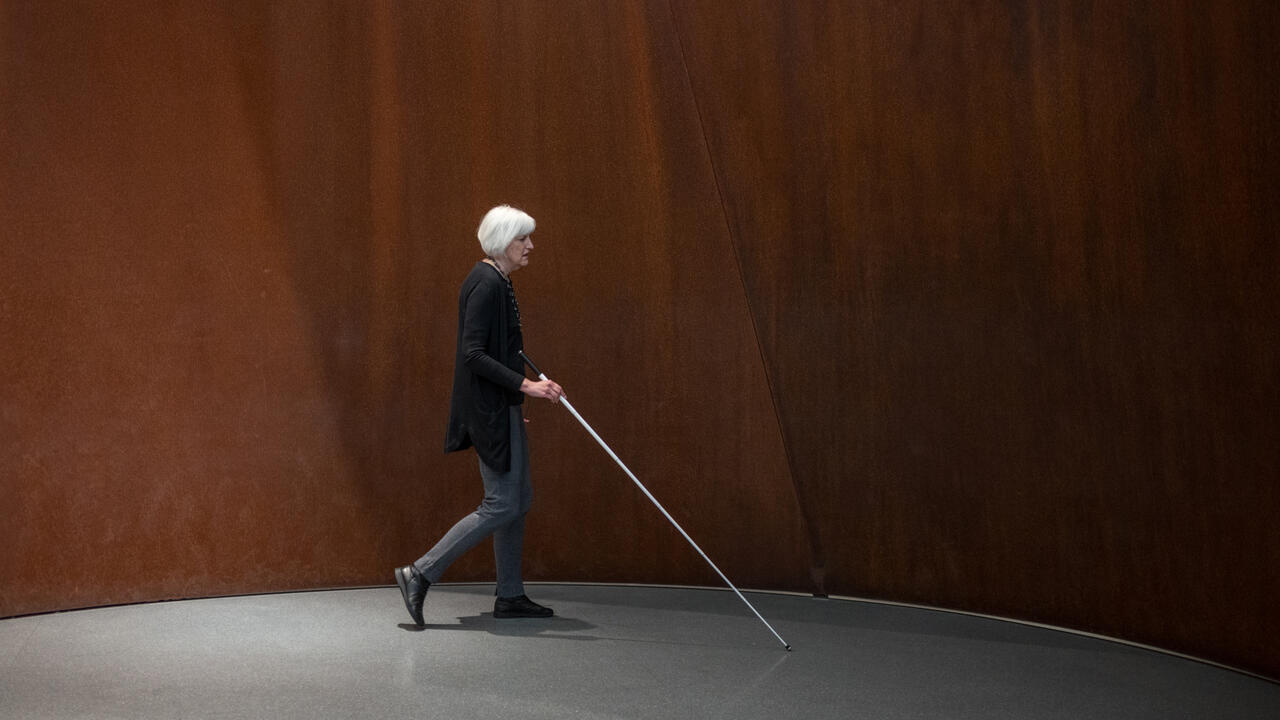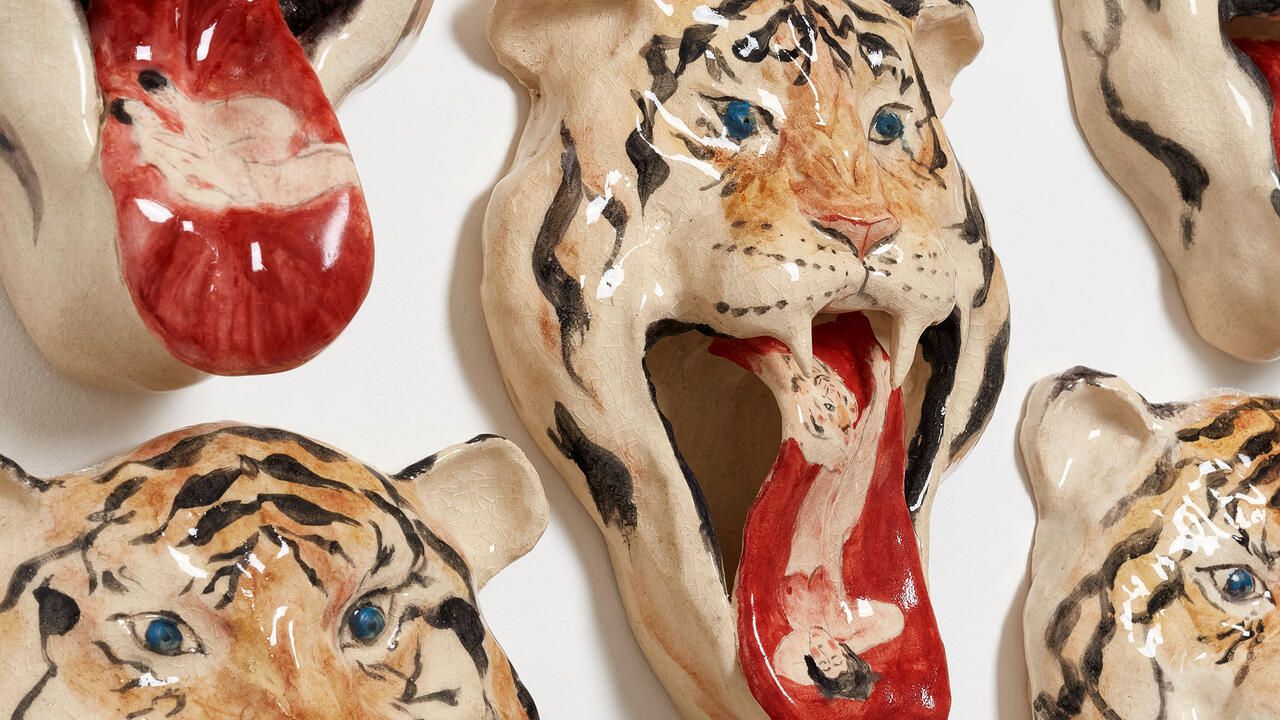The Look of Love
Curated by Rear Window, the work in 'The Look of Love' was commissioned to respond to 'the idea of Love as a topic of representation' and, as the catalogue introduction explains, 'more specifically the Love shared between two adults'. In Smith and Stewart's Dead Red (1996) Stewart relentlessly plants red kisses on Smith's face. Both faces are pale and androgynous, but Smith's repose is ambivalent: the stiff rebound of her head from the impact of the kisses suggests the rigor of death. The lipstick intimates both the carnal red of passion, and the macabre red of the charnel-house. This is how love 'looks', but it is also an image of necrophilia. And it is death, as a correlation of love a theme often implicated in this exhibition. By loving we cheat death we defy death's gaze by making ourselves a little immortal in the eyes of another. The representation of love operates as a talisman, but its presence also indicates that which it banishes.
In Simon Streather's July 30 July 31, 1994 24 hours (1994), absence and anguish are defined by the artist's lone presence in 24 photographs stuck to the wall in three columns. Each image is of Streather, on a patio, seated at a table opposite an empty chair. A full blown white rose swathes the wall behind. 18 photographs capture the artist seemingly deep in thought or haranguing himself. Six black photographs suggest the dread loneliness of night.
In the main gallery space, recovered domestic objects foreground the decay of self and love. In Butterfly (1996) Naomi Dines has inserted an enlarged print of bee-stung lips into the three panels of a dressing table mirror. Innocuously perched on a shelf, this homely object projects a diseased vision: in the wings of the 'mirror' venereal scabs congeal around the corners of the comely mouth. Lucy Heyward's Tic, tic, tic (1997) is an old-fashioned queen size bed, pushed against the wall. Atop the yellowed lace counterpane, a lamp squeezed between the mattress and footboard catches a phalanx of dry wishbones in its beam. 20 odd wishes lie intact, bowed and brittle, their long shadows stalking this domain of dreams. Occupying the central area is Anne Michie's recreation of Jean Thomas and Harry King's dining room, Looking for Love Waits for Nobody (1997). Delineating its space with carpet, this reconstruction has the deadened dustiness of a themed exhibit. Threads of a romantic narrative weave through the nostalgia: a cardboard gauge for selecting ring sizes peeps out from under a VE Day Chronicle. Michie has intervened by placing handkerchiefs with embroidered scripts on the cushions, table and mirror.
Jayne Parker riddles with a look in The Invitation (1997). This intimate projected film loop chronicles Parker lying in bed looking straight up into the camera. Her gaze, though direct, is an unknown quantity. Rolling over, she further denies engagement, negating a prescribed invitation to look and participate in a film fantasy of love. A chandelier, shot from below (and thus implied as the object of Parker's vision) cuts into the loop of looking and denial, adding a cold formal element to this bedroom cameo. In Isaac Julien's The Attendant (1997), two narrow photographic prints are juxtaposed horizontally, purportedly mirroring each other's contents. The top image shows a white man bound to the floor, whilst a hazy figure cracks a whip. In the background hangs a tableaux of muscle men cartoons. The inverted print below is of a black man grinning in the same scenario. Caught in a moment, the unfurling lash is an extension of the attendant's silhouette. In perpetual stasis, the images are bound by the medium, yet the prints' texture suggests transference of these captured dynamics of power and desire from a time-based medium.
As in Julien's piece, sex creeps into one of two Jordan Baseman works in the show. Muscle (1997) is a carmine cast of a tongue vividly pointing out of the white gallery wall. Provoking a sensation of new physical delights, the tongue and its associated wickedness almost sends up the show's aim to represent Love without specifically referring to sex. The fleeting poignancy of love is intimated by Simon Foster-Ogg's dialogic piece, Love Song (1997). A reciprocal relationship is entered as you cross the gallery threshold. Theramins installed in the door frames warble a response to your presence, their pitch oscillating as different parts of the metal jambs are touched. But of course, once you have passed on, their fickle song plays for another.

















